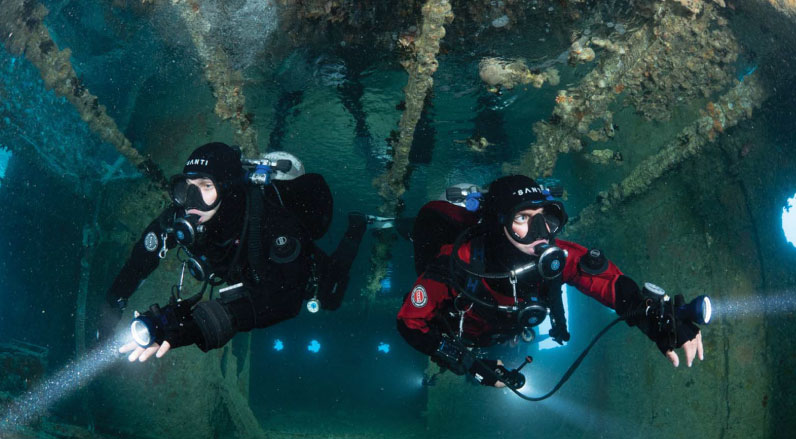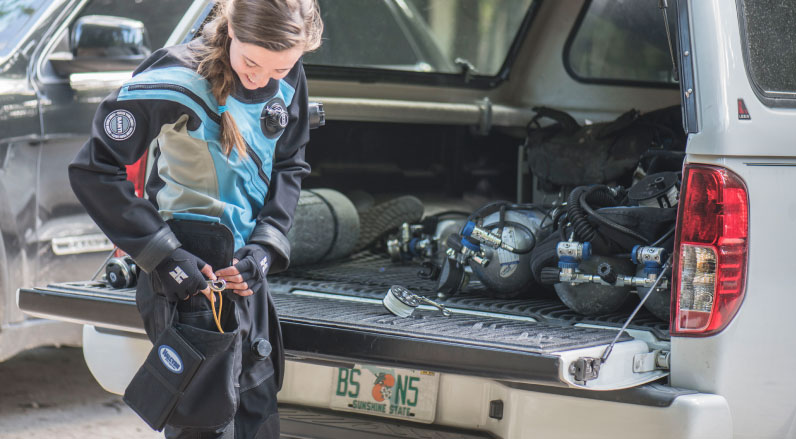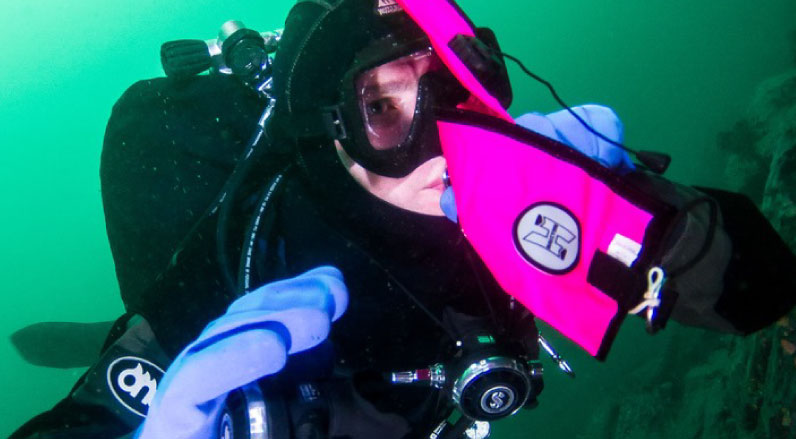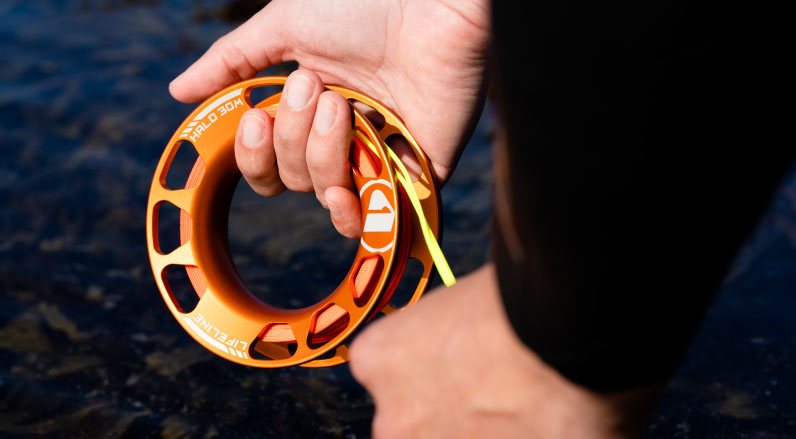We love all the amazing Lifeboat volunteers at the RNLI. A number of our divers are part of Honest HQ’s local crews. We’re so glad they’re around should we ever need them, but in this article, I’m going to outline some dive planning steps we can take to avoid needing to call out the RNLI when scuba diving!
1. MAKE SURE YOU’RE FIT TO DIVE
Scuba diving is a relaxing sport… once you’re in the water and everything is going to plan that is!
Humping your gear to the water’s edge or down a tonne of jetty steps onto the boat, fighting that unexpected current to get back to your exit point, giving your buddy a tow because their fin fell off, that long surface swim back to the boat because you came up in the shallows… maybe diving isn’t as relaxing as I first thought! Plus, if you’re diving in the UK, there are some extra stressors to the body, especially in the colder months when it starts to get a bit nippy.
Turns out, scuba diving can be really strenuous at times which is why all divers should make sure they’re fit to dive.
Research from the RNLI shows that 50 divers lost their lives around the UK coast between 2011 and 2015. 72% of those were aged 45 or over and the evidence suggests that they were likely to have succumbed to a medical incident like a heart attack rather than a diving related injury.
Looking after your cardiac health is seriously important for all divers. Get out and get the blood pumping in between dive trips.
And it’s not just your physical fitness. Mental and emotional fitness to dive are equally as important. Divers need to make sure that they’re feeling good to cope with the challenges that diving can throw at us. If you’d like to learn more about this, get help with a problem you’re having or take courses on the topic, check out Fit To Dive.

2. PLAN THE DIVE, DIVE THE PLAN
Proper dive preparation is key to making sure your team stay safe in the water and you avoid needing the RNLI when scuba diving.
Planning will start on the run up to the dive, and if you’re anything like me, possibly even starting a few days in advance. Conditions can be pretty changeable up here in Northumberland, so I watch the weather – the wind in particular – like a hawk a few days before the dive. I also check the tides so I can have an idea of the currents and viz.
It’s dead easy to predict conditions for shore dives round here, but if I’m up at The Farnes or St Abbs, I ask the oracles – the boat skippers! They know the dive sites like the back of their hands and they know exactly what the water is doing. If you’re diving somewhere new, or you’re not 100% sure, check in with a local salty sea dog who can help you out. Even better would be to take them in the water with you to show you around for the first time!
Give your gear a good checking before you leave for the dive site, especially if it’s been dry for a while. Make sure everything is working as expected and that it’s been serviced within the last 12 months (and on that note, give Jim a shout if you’re due one!). Checklists work great to make sure you pack all the gear you need and nothing gets left behind.
You and your buddies should make sure you know all the details of your dive including:
- the route (plus the expected current direction, surface weather changes etc while you’re down there)
- max depth, max dive time, turn times (or pressures)
- what to do in the case of an emergency (including buddy separation)
- defining the roles of each team member – who’s a leader, who’s a follower, where will they be positioned and how are they expected to behave?
Before you jump, tell shore cover your dive plan including the time you’re expecting to be back on dry land. It’s important that they have this information so that can raise the alarm with the RNLI when scuba diving has gone on too long and you’ve not returned!
And finally, make sure you do your pre-dive checks with your team. This is your final catch of little issues that might turn into big problems once you hit the water.

3. CARRY THE RIGHT GEAR
Every diver should have a marker buoy with them when in the water. Whether it stays above you all the way round your dive, or you launch it during your safety stop, it’s one of the best ways to tell everyone where you are.
Towing a marker buoy behind you is a great way to make sure that shore cover can track your position. If you’re in shallow water and there’s boats about, it’s essential to keep your team safe. Should one of your team end up at the surface, it’s also a really quick way of making contact again and regrouping.
I always have a big tow float on a chunky reel when I’m shore diving with students, but a dSMB inflated at the start of the dive works great too. It takes a bit of practice to be able to master towing, especially if there’s kelp or lobster pot lines around, but it’s so worth it!
If you’re diving from a boat, you need to take a dSMB and reel with you. And don’t just whack it in your pocket and forget about it. Launching an SMB is tricky! Even though I’ve done it a thousand times, it’s still something that I easily fumble.
Practice launching at every opportunity you get – do it in the pool, do it on a shore dive, do it even if someone else has already put theirs up. The more you practice, the more comfy you feel doing it, and in the rare occasion you might need to do it quickly in an emergency, it’s super easy and stress-free.
You’ll normally launch your SMB just before or during your safety stop, but you can pop it up whenever you feel it’s necessary. Perhaps one of your group has disappeared, maybe you’re shallower than expected, if you feel you need to be seen, launch it. And remember, if it didn’t fully inflate on the way up, when you’re back on the surface get some extra air in it to make it stand tall and be as visible as possible.
My favourite SMB is from Apeks. I love the oral inflate, it’s so easy to use! And for a reel, I just can’t fault the Apeks Lifeline Halo Spool. I’ve only got little hands so I struggle to keep grip of normal spools, but that big hole in the middle of the Halo means when I let go of the SMB the spool spins sooo nicely in my fingers.
4. IF YOU EVER LOSE YOUR DSMB…
Something that I only learnt recently (honestly, every day is a school day – even 15 years in!) is that if you ever lose your SMB on a dive, you should give the Coastguard a call to let them know there’s no diver attached to it. If they get reports of a random SMB floating about in the ocean, they’ll raise the alarm and rally the troops for a possible missing diver search.
So ring the Coastguard, dry your tears because you’re gutted it’s gone, and give us a shout so we can help you replace it ready for your next dive! 😉

5. SHOW YOUR LOVE
Hopefully, this little article will help you plan dives in a way that avoids you needing to call the RNLI when scuba diving. The volunteers of this amazing charity are incredible and we’re so lucky that should the proverbial hit the fan, even after our best efforts, these heroes will help pick up the pieces.
Lifeboats are powered by donations, that’s why the RNLI is one of our chosen charities. You can show your love by leaving them a little donation during your checkout. ?

